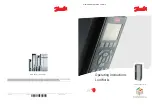
For more information, refer to the following standards and
comply as applicable.
1. ANSI Standard Z49.1 SAFETY IN WELDING AND
CUTTING, obtainable from the American Welding Society,
2051 NW 7th St., Miami, FL 33125.
2. ANSI Standard Z87.1 SAFE PRACTICE FOR
OCCUPATION AND EDUCATIONAL EYE AND FACE
PROTECTION, obtainable from American National
Standards Institute, 1430 Broadway, New York, NY 10018.
3. America Welding Society Standard A6.0 WELDING AND
CUTTING CONTAINERS WHICH HAVE HELD
COMBUSTIBLES, obtainable same as item 1.
4. NFPA STANDARD 51. OXYGEN-FUEL GAS SYSTEMS
FOR WELDING AND CUTTING, obtainable from the
National Fire Protection Assoc., 470 Atlantic Avenue,
Boston, MA 02210.
5. NFPA Standard 51B. CUTTING AND WELDING
PROCESSES, obtainable same as item 4.
6. CGA PAMPHLET P-1. SAFE HANDLING OF
COMPRESSED GASES IN CYLINDERS, obtainable
from the Compressed Gas Association, 500 Fifth Avenue,
New York, NY 10036.
7. OSHA Standard 29 CFR, Part 1910, Subpart Q WELDING,
CUTTING AND BRAZING.
Safety Suggestions
Electric arc welding produces ultra-violet rays, which are
harmful to skin and eyes. Ultra-violet radiation can penetrate
lightweight clothing, reflect from light colored surfaces, and
burn the skin and eyes. Wear flameproof welding gloves which
are not oily or greasy. The oil or grease on the gloves may
ignite. Wear a heavy, pocket-less; long sleeve shirt, cuffless
trousers, and high-topped work shoes. Wear a full-face welding
helmet with a number eight or darker lens and a cap. These
precautions will protect eyes, hair, face, and skin from arc rays
and hot material.
- To avoid fire, do not weld on wood, plastic tile, or carpeted
floors. Concrete or masonry floors are safest.
- Do not weld on drums, barrels, tanks or other containers until
they have been cleared as described in AWS Standard A6.01.
- Provide adequate ventilation in the welding area at all times.
Do not weld on galvanized zinc, cadmium or lead beryllium
materials unless POSITIVE sufficient ventilation is provided.
These materials produce toxic fumes.
- Do not weld in areas close to degreasing or spraying
operations. Chlorinated hydrocarbon vapors may react with
the ultra-violet rays and form highly toxic phosgene gas.
- If you develop momentary eye, nose or throat irritation during
welding, stop welding immediately. This is an indication that
ventilation is not adequate. Do not continue to weld until
ventilation is improved.
- Exposed, electrically hot conductors or other bare metal in
the welding circuit, or ungrounded electrically hot equipment
can fatally shock a person whose body becomes a conductor.
Do not stand, sit, lie, lean on or touch a wet surface when
welding.
- Frequently inspect cables for wear, cracks, and damage.
Replace those with excessively worn insulation to avoid a
possible lethal shock from bared cable.






























